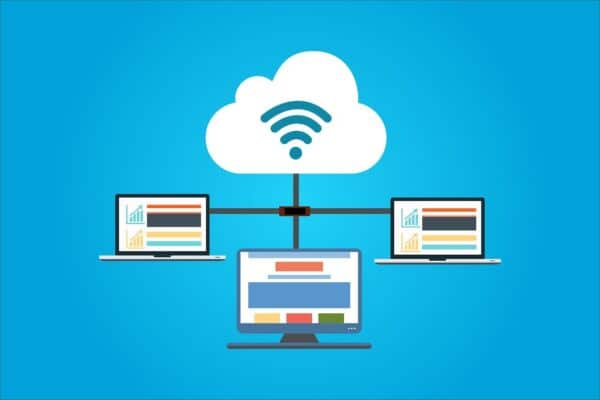Amazon released the first commercial cloud in 2006, initiating the era of cloud modernization. Google followed suit in 2008 before the U.S. federal government cemented the move with a cloud modernization policy in 2011. Migrating to the cloud leverages best industry practices, advanced architectures, and technologies.
Organizations operating on the cloud enjoy enhanced user experience, performance, functionality, and scalability. The costs of moving to the cloud are higher, but it is imperative to take that initiative. These are signs you should migrate your business to the cloud to tap from the contemporary languages, infrastructure, and tools.
Image by Kreatikar on Pixabay
1. Aging Legacy Infrastructure
Many businesses use on-premise IT infrastructure and old-fashioned legacy systems. Although these systems are versatile and agile, they have limited performance and scalability capabilities.
Aging IT infrastructure and outmoded legacy systems hinder innovation and implementation of changing market dynamics. These limitations can affect the seamless adoption of growth-enhancing strategies.
Cloud modernization excludes the need to bank on outdated legacy systems and inept IT infrastructure. Cloud infrastructure provides consummate scalability, enabling organizations to scale resources as demand upsurges or shrinks. Flexibility lets your company manage changing workloads with minimal upfront investment.
Many cloud systems charge on a pay-as-you-go model and eliminate the upfront infrastructure and hardware expenditure. Cloud environments allow organizations superior agility and flexibility, enabling your team to restate and innovate. Providers use heavy-duty security measures to protect your infrastructure and data from cyber threats.
2. Wasteful Resource Deployment
Does your organization’s IT department battle with overprovisioning and underused resources? Your company allocates more resources to network bandwidth, computing power, and storage capacity than necessary. You find your organization regularly provisioning hardware to meet worst-case and peak-usage situations.
Under/overprovisioning causes inept resource usage and amplified costs. Over and underprovisioned resources remain underused or indolent for extended periods. This causes higher operational expenses and misused capacity. It also makes it challenging to allocate budgets and forecast resource requirements.
Cloud transformation gives organizations the leverage of the pay-as-you-go model. Your company gets to optimize resource usage and lets you pay for services you use. The approach aids in lowering operational costs and enhances budget management.
3. Increasing Data Risks
Cyber and data security are leading causes of alarm for businesses worldwide. IT disruptions, ransomware, data breaches, and other cyber events threaten business success. Your organization suffers a big blow when employee files, IP data, client details, and financial records get exposed to the wrong hands. You face wide-reaching reputational damage and regulatory penalties, which affect your bottom line.
Cloud transformation allows your organization to leverage up-to-the-second security technology. Leading-edge platforms offer proactive data security solutions to enable businesses to protect sensitive customer information.
These platforms have threat detection, encryption, network security controls, and identity & access management services. The built-in security capabilities secure your in-transit and at-rest data, mitigating the risk of cyber-attacks and data breaches.
Cloud providers uphold stringent compliance certifications and standards. Cloud systems provide robust encryption mechanisms, encrypting your company data and enhancing confidentiality.
4. Increasing User Dissatisfaction
Satisfying clients is a mandatory organizational requirement. Your business must satisfy clients with the services and products. You should solve all their problems and address their pain points. That is the only way clients can feel the need to keep consulting you for pertinent issues and solutions.
If clients complain, it indicates a lack of quality in services and products. Clients complaining about your apps and services require upgrading to the latest and most efficient solutions.
Upgrading to modernized applications and systems can resolve the issue. More reliable and efficient applications give you a competitive edge, enhancing loyalty and user experience.
Providing services and products that solve client problems streamlines the transactional experience. Clients will always be zealous to consult you for solutions similar to those you offer.
5. Inefficient Recovery Mechanism
Every day brings your organization closer to that unforeseen disaster. Disasters striking businesses leave permanent dents and can even cause untimely closures. Penetrative disasters ruin your IT infrastructure and damage data centers. You could lose software and hardware assets following a disaster, costing your business money and time.
Lacking mechanisms to handle these catastrophic situations and maintain business continuity can lead to lasting impact. Downtimes are the most prevalent disasters, costing businesses approximately $336,000 per hour. Such high costs devastate your financial flow and even prevent you from hitting the bottom line.
Many cloud transformations have failover protocols and disaster recovery mechanisms. The most current cloud solutions have fault-tolerant servers in multiple locations. These safeguard against failures and their resultant impacts. They have production servers that switch over automatically to backup servers. That prevents disruptive events and foolproofs the business. That means no matter the disaster spreads, your company remains unaffected and running.
Wrapping Up
Companies must scrutinize their IT infrastructure and systems closely to ensure they meet current business demands. Recognize when your company needs cloud modernization to address consumers’ key pain points.
Many signs show your organization needs an upgrade to cloud systems. These include user dissatisfaction, slow performance, and inefficient recovery systems. Your company needs cloud modernization when data risks increase. Also, take that initiative when resource wastage becomes rampant.







Leave A Comment